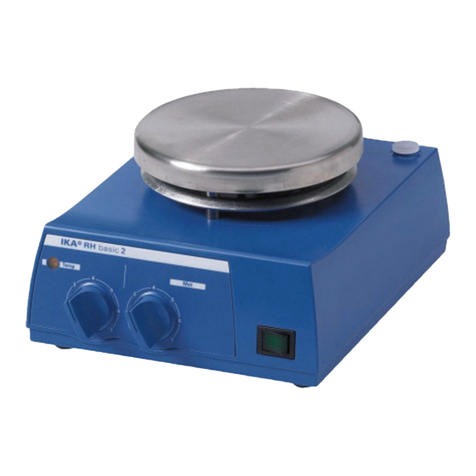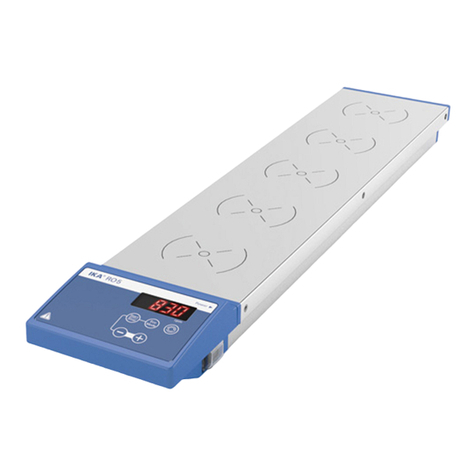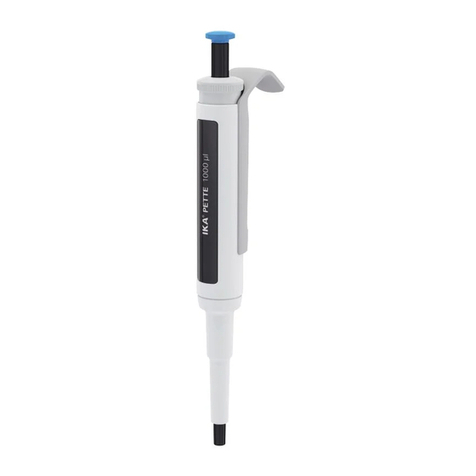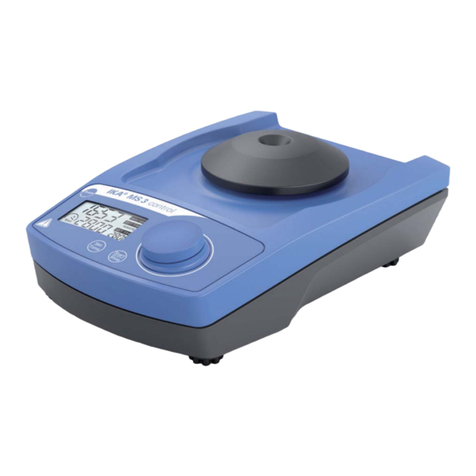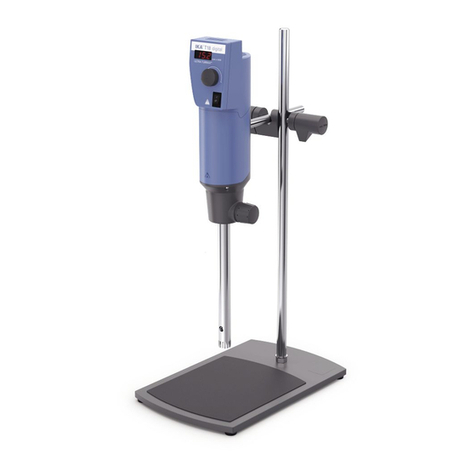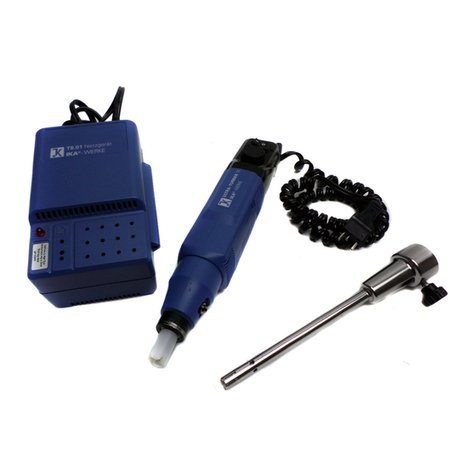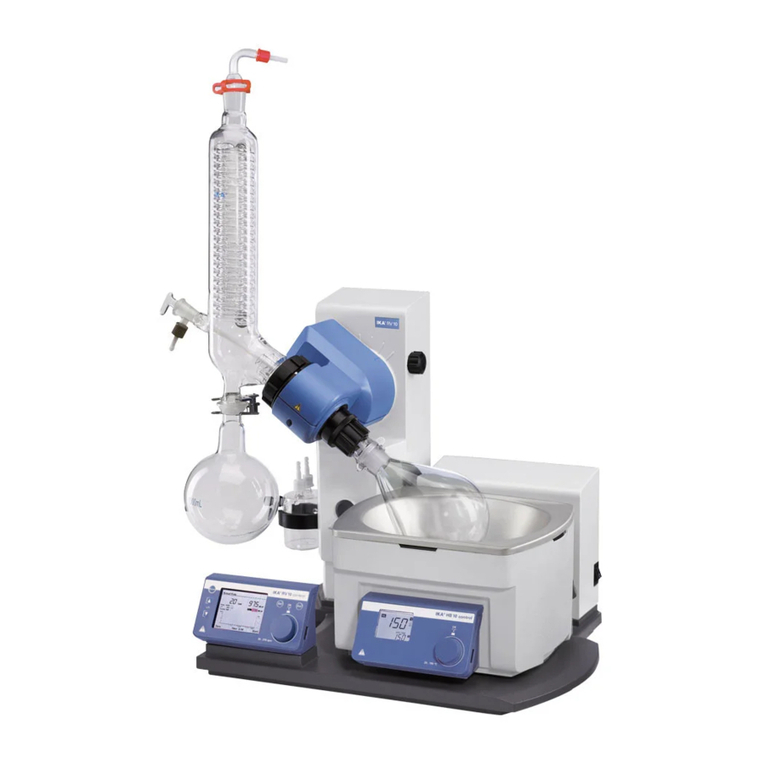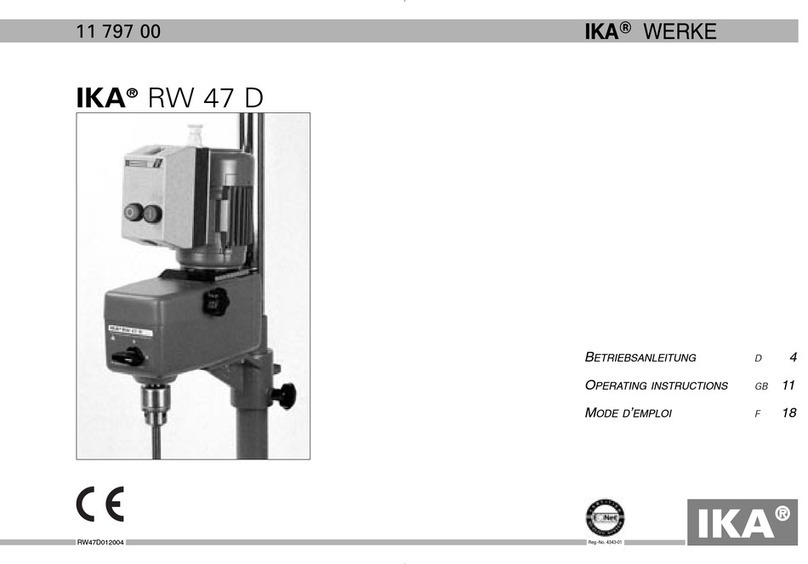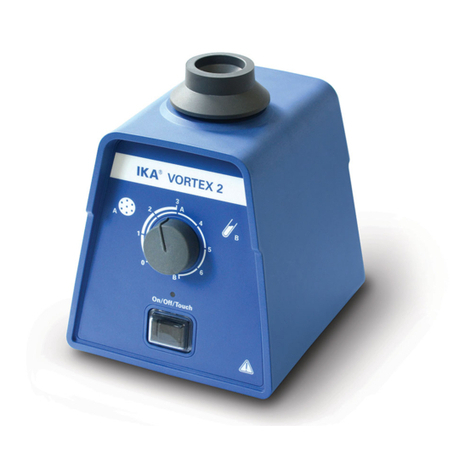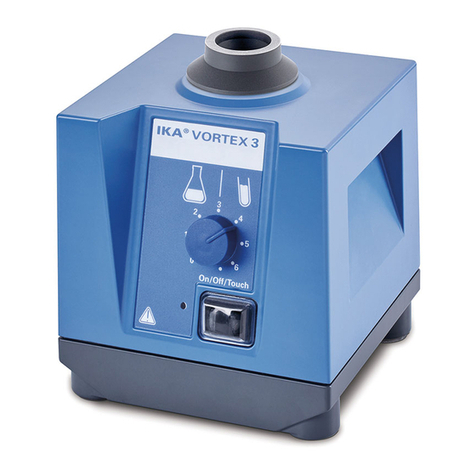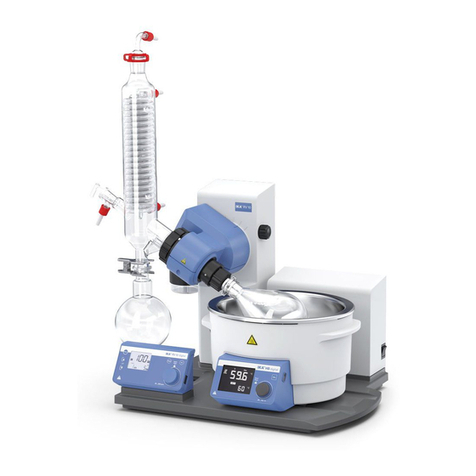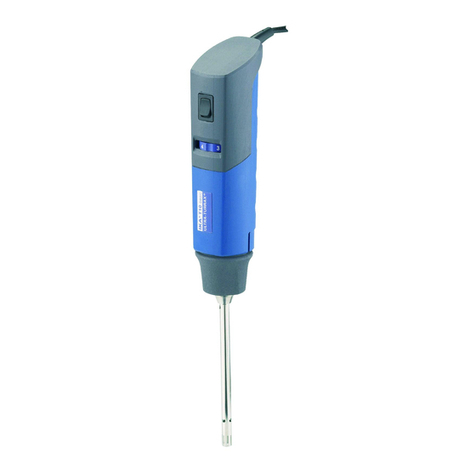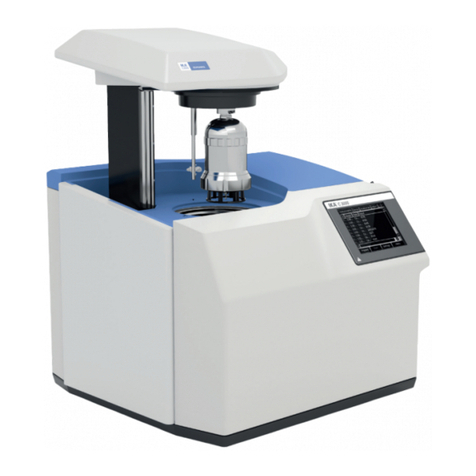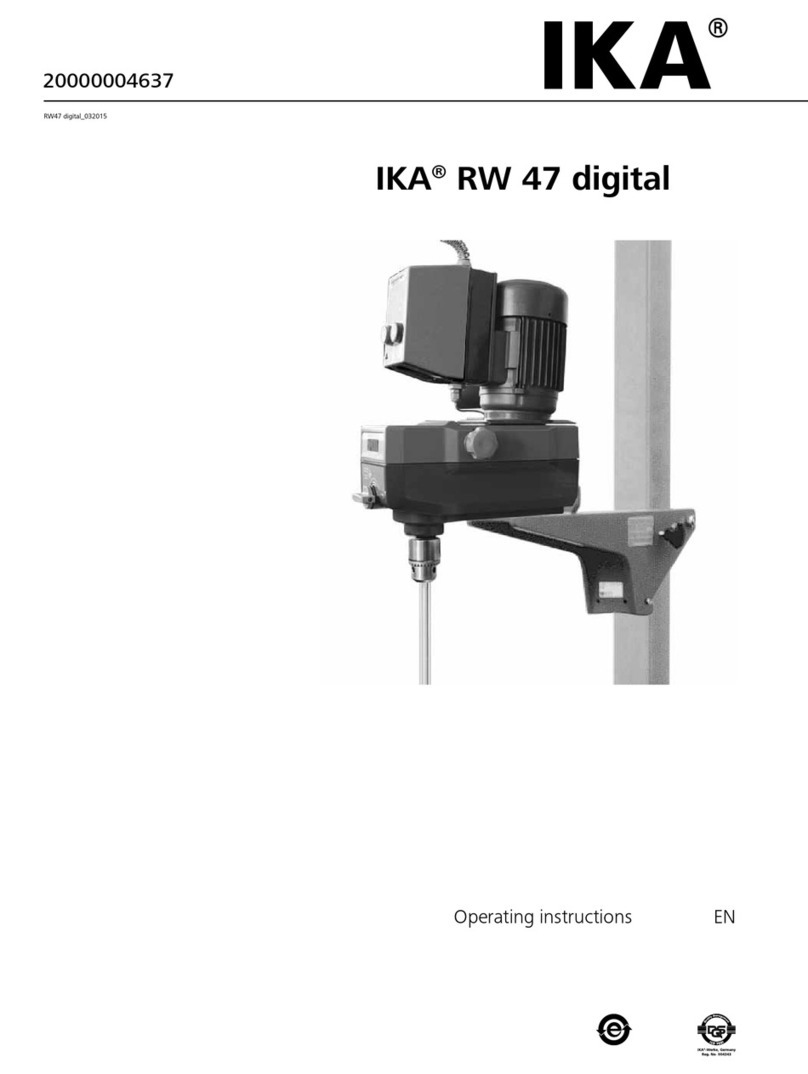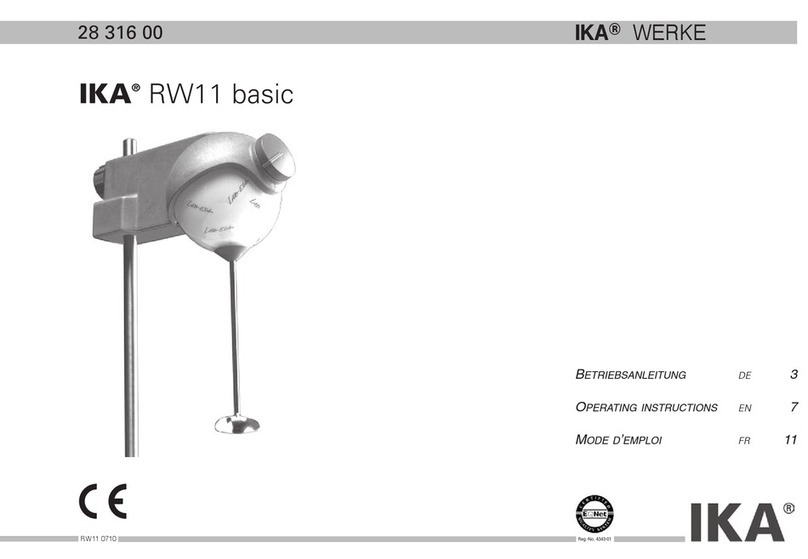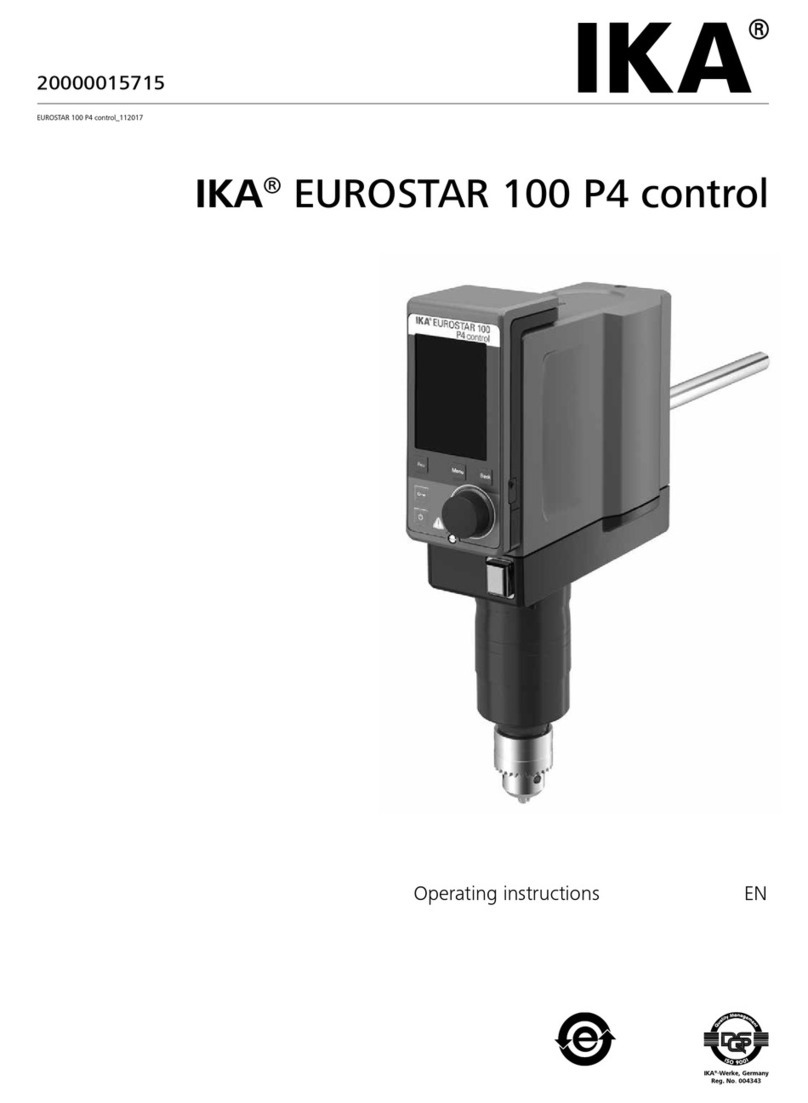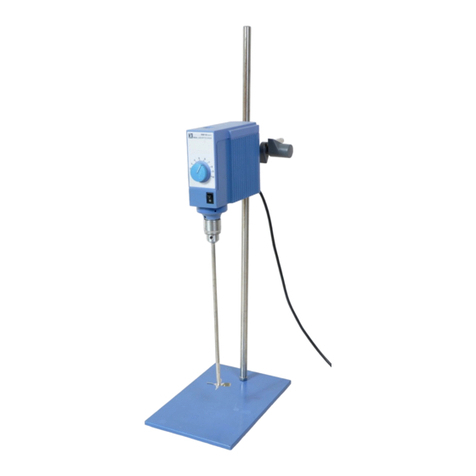
regelmäßigen Abständen, und vor allem vor jeder Neuinbetrieb-
nahme, kontrolliert werden.
• Wird ein unruhiger Lauf des Gerätes bemerkt, muss auf jeden
Fall
die Drehzahl soweit reduziert werden, bis keine Laufunruhen
mehr auftreten.
•
Achten Sie darauf, dass einzelne Schüttelgefäße mittig, und meh-
rere Schüttelgefäße gleichmäßig auf dem Schütteltisch platziert
und gut befestigt sind.
•
Beim Schütteln können infolge ungünstiger Beladung und
Schwerpunktlage dynamische Kräfte auftreten, die ein Wandern des
Schüttlers auf der Abstellfläche verursachen können. Ein-
schränkungen der Belastbarkeit, bzw. des Auflagegewichtes bei
hohen Drehzahlen können der Tabelle im Kapitel “Inbetriebnahme”
entnommen werden.
•
Nach einer Unterbrechung der Stromzufuhr während eines
Arbeitsvorganges läuft das Gerät von selbst wieder an.
•
Zusätzliche Gefährdungen für den Anwender können auftreten,
wenn beim Arbeitsvorgang entzündliche Materialien verwendet
werden, oder wenn bei Verwendung von Glaseinrichtungen die
übertragene mechanische Schüttelenergie zum Glasbruch führt.
•
Es dürfen nur Stoffe oder Mischungen von Stoffen mit dem Gerät
bearbeitet werden, von denen der Anwender Kenntnis darüber hat,
dass der Energieeintrag durch das Bearbeiten unbedenklich ist. Das
Gleiche gilt auch für den Energieeintrag durch Sonneneinstrahlung
während des Arbeitsvorganges.
•
Das Gerät darf nicht für den Betrieb in gefährlichen Atmosphären,
zum Mischen von Gefahrstoffen und für den Betrieb unter Wasser
eingesetzt werden.
• Das Zubehör darf nur nach Ziehen des Netzsteckers montiert werden.
•
Der Schutz für den Benutzer ist nicht mehr gewährleistet, wenn
das Gerät mit Zubehör betrieben wird, welches nicht vom Hersteller
geliefert oder empfohlen wird, oder wenn das Gerät in nicht bestim-
mungsgemäßem Gebrauch, entgegen der Herstellervorgabe betrie-
ben wird.
• Das Gerät darf - auch im Reparaturfall - nur von einer Fachkraft geöff-
net werden. Vor dem Öffnen ist der Netzstecker zu ziehen.
Spannungsführende Teile im Inneren des Gerätes können auch län-
gere Zeit nach Ziehen des Netzsteckers noch unter Spannung stehen.
Die Schüttler MS 1 und MS 2 eignen sich durch Verwendung
unterschiedlicher Aufsätze zum Mischen von Flüssigkeiten in
Flaschen, Kolben, Reagenzgläsern, Mikrotiterplatten (nur MS 1)
und Schalen für ein maximales Auflagegewicht von 0,5 kg
(inkl. entsprechendem Aufsatz).
Sie sind für den Einsatz in Laboratorien konzipiert. Die Bewegung
des Schütteltisches, bzw. der aufgestellten Gefäße ist kreisför-
mig. Zum bestimmungsgemäßen Gebrauch muss das Gerät auf
einer stabilen, ebenen und rutschfesten Aufstellfläche stehen.
Außerdem muss darauf geachtet werden, dass sich Gegenstände
nur in ausreichendem Abstand zum Schüttlers befinden dürfen
und diese während des Schüttelvorganges nicht wandern können.
Bitte packen Sie das Gerät vorsichtig aus, und achten Sie auf
Beschädigungen. Es ist wichtig, dass eventuelle Transportschä-
den schon beim Auspacken erkannt werden. Gegebenenfalls ist
eine sofortige Tatbestandsaufnahme erforderlich (Post, Bahn oder
Spedition).
Zum Lieferumfang des Gerätes gehören:
MS 1: Ein Schüttler MS 1, ein Standardaufsatz MS 1.1, ein
Einhandaufsatz MS 1.2, ein Reagenzglaseinsatz MS 1.32, ein
Mikrotiterplatenaufsatz MS 1.4 (siehe auch Zubehör S.6), ein
Netzkabel und eine Betriebsanleitung.
MS 2: Ein Schüttler MS 2, ein Standardaufsatz MS 1.1, ein
Einhandaufsatz MS 1.2 (siehe auch Zubehör S.6), ein Netzkabel
und eine Betriebsanleitung.
4MS1/2 122004
Bestimmungsgemäßer Gebrauch
Auspacken
3453900_BA MS1_MS2_122004 11.04.2005 9:28 Uhr Seite 4
